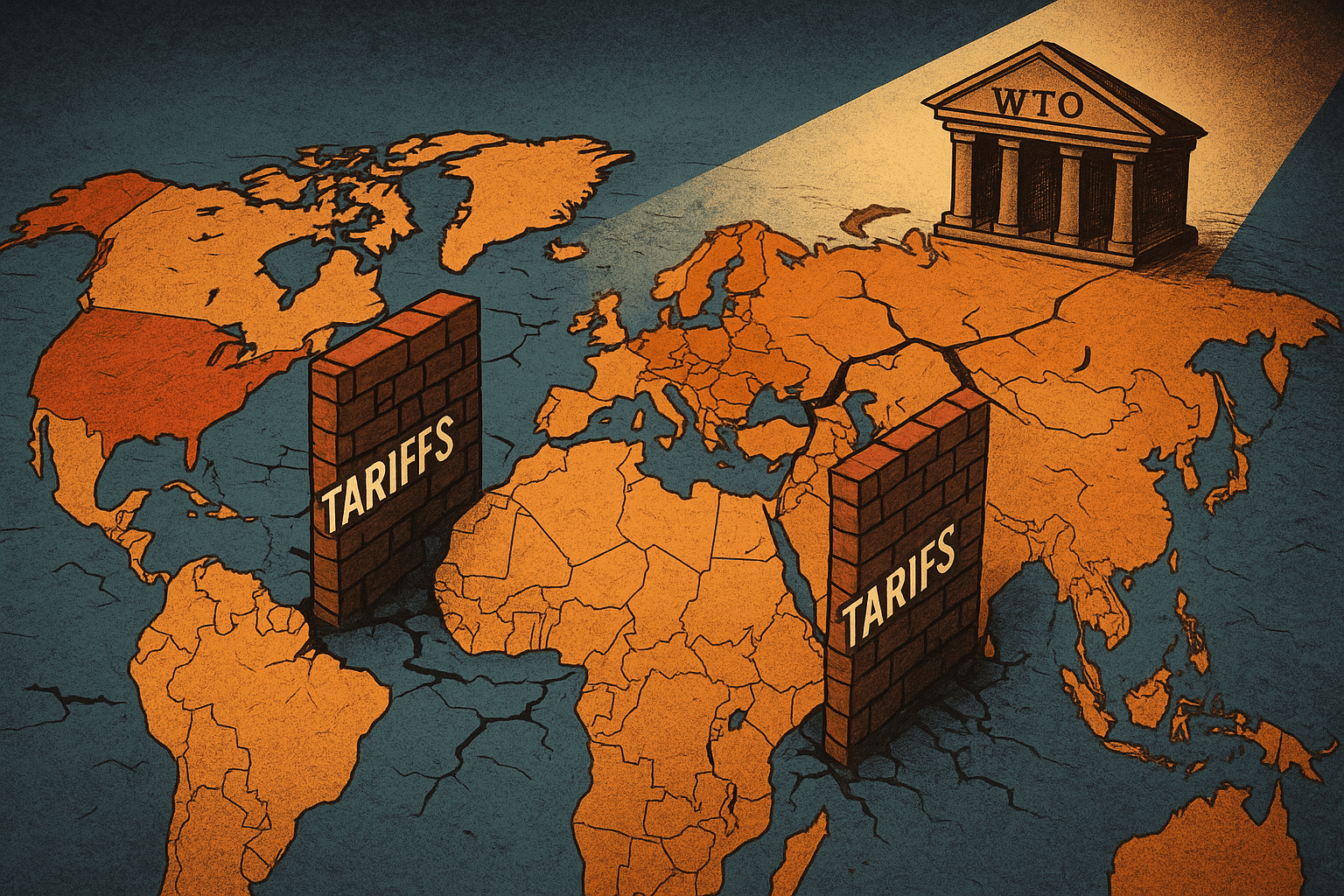A Fragile Global Web Unravels
Imagine a vast, interconnected web of global trade, where goods flow seamlessly across borders, sustaining economies and livelihoods. Now picture a sudden storm—massive tariffs—ripping through that web, leaving gaps and chaos. On September 2, 2025, WTO Director-General Ngozi Okonjo-Iweala described this very scenario, calling US President Donald Trump’s tariff surge the “largest disruption to global trade rules in 80 years.” With the share of WTO-compliant trade dropping to 72%, and potential fallout extending into 2026, this isn’t just policy—it’s a seismic shift. Let’s explore the story behind this warning, its implications for 2025, and what it means for economies worldwide.
The Tariff Storm Hits Hard
Trump’s aggressive tariff push, starting with higher import duties on most trading partners, has slashed the portion of global trade under WTO’s Most Favoured Nation (MFN) terms from 80% to 72%. This principle ensures equal treatment among members, but escalating tariffs are sidelining it, raising fears of a fragmented system. Okonjo-Iweala highlighted that without action, this decline could worsen, eroding the predictability that underpins international commerce.
Example: A European exporter now faces 25-50% higher costs shipping to the US, forcing reroutes through alternative partners, disrupting supply chains.

WTO’s Dire Forecast
Okonjo-Iweala warns that tariff effects may linger into 2026, as stockpiling-driven trade surges fade. The WTO recently upped its global trade growth forecast from 0.2% to 0.9%, but sustained tariffs could reverse this. “If tariffs are used geopolitically, there’s little we can do,” she noted, emphasizing the need for adaptability.
Example: US tariffs on Chinese goods alone could shave 0.5% off global growth, per IMF estimates, amplifying risks for emerging markets.
Table: Projected Tariff Impacts (2025-2026)
| Scenario | Global Trade Growth (%) | Potential Loss ($ Trillion) |
|---|---|---|
| Base Case | 0.9 | – |
| Prolonged Tariffs | 0.5 | 2.5 |
| Escalation | -0.2 | 5.0 |
US Funding Cuts: A Double Blow
Trump’s plan to slash $29 million in WTO funding adds pressure, alongside cuts to other bodies. Okonjo-Iweala voiced concerns but noted ongoing talks with the US Trade Representative. This move could weaken the WTO’s role in resolving disputes, exacerbating trade fragmentations.
Example: Past US pauses in contributions have delayed WTO reforms, impacting global arbitration.

China’s Reform Openness
Okonjo-Iweala sees a “chance” for progress, with China showing willingness to address industrial policies in WTO reforms. Proposals include streamlined decision-making and fairer subsidies, amid efforts to revitalize the paralyzed organization.
Example: China’s subsidy talks could resolve long-standing US complaints, easing tensions.
Fisheries Deal on the Horizon
A bright spot: The WTO’s fisheries subsidies agreement is three ratifications away from entry into force—the first global deal since 2017. Okonjo-Iweala confirmed it’s imminent, potentially within weeks.
Example: This pact aims to curb overfishing subsidies, benefiting sustainable global fisheries.

FAQs
- What caused the trade disruption? US tariffs have reduced WTO-compliant trade to 72%.
- Will tariffs affect 2026? Yes, as stockpiling fades, impacts may emerge.
- What’s the US funding cut? $29 million reduction, raising WTO concerns.
- Is China open to reforms? Yes, showing potential for progress on subsidies.
- When will the fisheries deal take effect? Soon, with just three ratifications needed.
Stay Informed on Global Trade Shifts
Unlock weekly insights on trade disruptions and economic strategies. Subscribe now!

